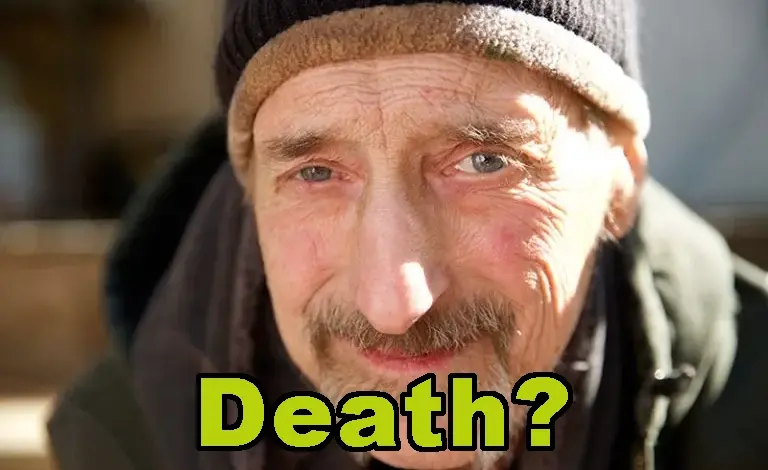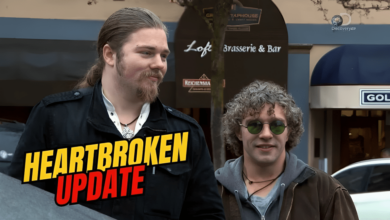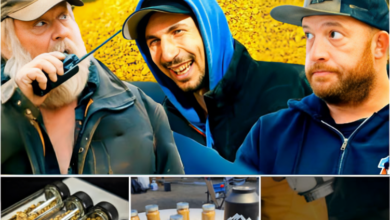Bob Harte’s death arrives on The Last Alaskans. How the show handles it—and his legacy.


“Oh, this is just the—I don’t know—close to the 15th time I should be dead. But God loves me and I love him and he knows it,” Bob Harte says in the second episode of The Last Alaskans season four.
He was not in his cabin in the Arctic National Wildlife Refuge in Alaska, but in a trailer in Fairbanks, looking gaunt, suffering from the effects of cancer.
As he looks around his trailer, he thinks about his cabin. “It’s hard to leave again,” he says. “This home is reminding me of the woods home. It’s quiet, peaceful, it’s a part of the woods in the middle of Fairbanks, and it’s precious. Especially to me.”
Bob has been precious to viewers of The Last Alaskans, which will continue on without him, though it will also carry on his legacy.
Sunday’s episode of the Discovery Channel show (Dec. 16 at 10 p.m.) will cover the aftermath of his death on July 22, 2017.
While his family and friends experienced the loss last year, for many viewers, Sunday’s episode will be the first time they learn about the end of Bob’s life.
How Discovery and the show addressed Bob’s death

Season four was filmed between August 2017 to March 2018, but a crew went out earlier that summer to film Bob Harte’s final days.
His death “was a story we knew had to be part of this [season],” according to Michael Gara, a Discovery Channel executive who’s now in charge of production of the series. “His connection to that place is so deep and meaningful that it was something that it was important for us to make sure we covered in a really respectful way.”
Gara, who joined the network in 2017 as the new season began production, said that he trusted The Last Alaskans’ production company, Half Yard Productions.
They “know what they’re doing, and they have such passion for—and they understand this world so well,” he told me. They “handled in a way that is epic and poetic.”
“It’s a tricky story—it’s someone that we—he deserves to have that story told, but we also don’t want it to become something grim. I thought they did a really great job of celebrating who he was and what he meant up there while he wanted to be back out at his cabin but he wasn’t able to,” Gara said.
Bob was, of course, a central participant in this process, and “was incredibly open and honest about what he was going through,” Gara added. “For us it’s not really about the details of his medical condition, but it’s about how he’s feeling and what this means to him as he looks back on his life, and the legacy that he leaves behind. He’s incredibly proud. He’s a kid from New Jersey who could have had a very small, common life and he took on this challenge—went up to Alaska to try to be a trapper and then figured out how to do it.”
One scene follows Heimo Korth as he goes to Bob’s cabin to retrieve a few items, and there, Heimo reflects on life and death.
Discovery’s Gara said that the show will stay with Nancy and Bob’s daughter Talicia “a little bit after Bob passes. This production has such a strong bond with these characters and they … told their stories really honestly and respectfully throughout the run of the series, so they have a level of honesty and openness that’s unusual. I think that’s why people who love the show connect to it so strongly,” he said.
Following in Bob’s footsteps: Charlie Jagow

Besides the loss of one of its central characters, season four of The Last Alaskans is focused on how “the younger generation becomes much more prominent this year, in every storyline.”
While Bob’s death is “a huge loss for the show and for that community,” Gara said that “Bob’s legacy lives on through Charlie, quite literally.”
Charlie Jagow “has been on the show for years, but has never nearly been a big a part as he will be this year,” Gara added. “We’ve seen him taking a leading role as he’s had to go out there and re-establish his trap lines, which are damaged by a fire, and then actually, literally walk in Bob’s footsteps as he took over Bob’s trap lines at the end of the year.”
I’ve appreciated The Last Alaskans for being such a quiet, peaceful, and moving show, one that can show us the wide-open beauty of Alaska and also bring us close to people who live there.
Discovery’s Michael Gara, who’s worked on many reality TV productions, said he also thinks it’s quite unlike other reality shows. “I’ve never seen a show that has such an incredible combination of being epic and incredibly personal,” he said.
“The world they’re in is massive, and you can’t get enough of those drones and getting a sense of the openness of Alaska, and then you feel very much like you are with someone that you know better than even some of your close friends because they’re talking to you in a way that is honest, real,” he said. “They don’t feel like they’re trying to put on an act in any way.”
Bob certainly did not, and that is just one of the many reasons why his absence will be deeply felt—on the show and in life.




